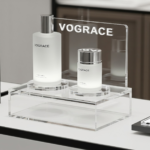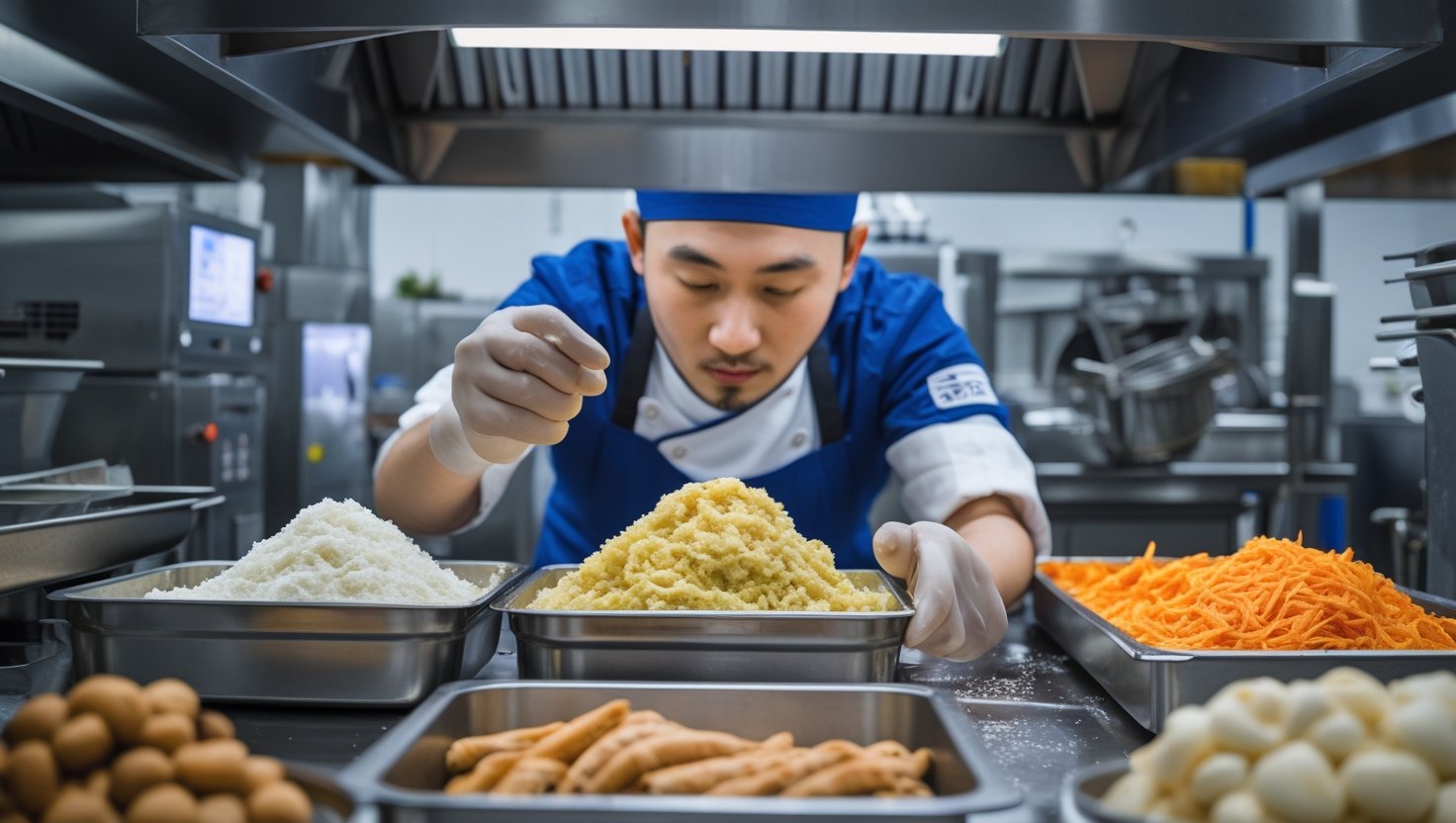Ever stopped to wonder how that gleaming workhorse on your countertop – your trusty stand mixer – actually came to be? While we celebrate the artisanal bread or the perfect meringue it helps create, the journey begins far earlier, in places humming with a different kind of energy: stand mixer factories. These industrial powerhouses are the silent partners to bakers worldwide, from home enthusiasts to massive commercial operations. At Mirabake, we’re obsessed with the machinery that makes culinary magic possible, and frankly, the story behind how these essential tools are born is just as fascinating as what they produce.
Think about it. The transition from hand-mixing to mechanized power revolutionized baking. It wasn’t just about saving elbow grease; it was about consistency, scale, and unlocking possibilities previously unimaginable. That revolution? It was forged on the factory floor. Today, stand mixer factories aren’t just churning out units; they’re hubs of innovation, precision engineering, and relentless focus on durability – because a mixer isn’t just an appliance; it’s an investment in someone’s passion or livelihood.
Here’s what we’ll knead through today:
- More Than Just Assembly Lines: What Defines a Modern Stand Mixer Factory?
- The Anatomy of Power: Core Components & Manufacturing Rigor
- Artisan vs. Industrial Giants: Understanding the Mixer Spectrum
- Innovation on the Line: What’s Next for Stand Mixer Tech?
- Choosing Wisely: Why Factory Pedigree Matters for Your Mixer
- Stand Mixer Factory FAQs: Your Burning Questions Answered
1. More Than Just Assembly Lines: What Defines a Modern Stand Mixer Factory?
Gone are the days (mostly) of purely manual, clangorous workshops. A top-tier stand mixer factory today is a sophisticated blend of advanced automation and skilled human craftsmanship. It’s about repeatable precision meeting meticulous quality control.
- Precision Engineering is King: It starts with design, often using CAD software pushed to its limits. Tolerances for gears, shafts, and motor mounts are incredibly tight. Even a fraction of a millimeter off can mean vibration, noise, and premature wear. Factories investing in high-precision CNC machining and injection molding set the benchmark.
- The Rigors of Testing: This is where the rubber meets the road – or rather, the dough hook meets the simulated double batch of stiff bread dough. Reputable factories subject components and finished mixers to brutal endurance tests. Motors run for hundreds of hours under maximum load; gears are stress-tested beyond normal operating limits; attachments are repeatedly flexed and impacted. Think of it as a mixer boot camp. Only the strong survive.
- Quality Control Embedded: QC isn’t just a final checkpoint; it’s woven into every stage. From inspecting raw material certifications to in-process checks on sub-assemblies (like ensuring planetary action is perfectly smooth before the housing is sealed), vigilance is constant. Automated optical inspection (AOI) systems might check solder joints on PCBs, while trained technicians listen for the slightest abnormal bearing whine.
- Supply Chain Muscle: A factory is only as good as its suppliers. Sourcing high-grade die-cast aluminum for housings, premium copper windings for motors, and food-grade stainless steel for bowls and attachments is non-negotiable. Strong factories build deep, audited relationships with their material partners. It’s about traceability and reliability.
Honestly, this aspect gets overlooked. People see the shiny exterior, but the true value is forged in the relentless pursuit of quality inside those factory walls. Cutting corners here? It shows up as a mixer that quits halfway through your holiday cookie marathon.
2. The Anatomy of Power: Core Components & Manufacturing Rigor
Let’s pop the hood (metaphorically – please don’t actually open your mixer’s motor housing!) and see what makes these factories tick by focusing on the critical bits:
- The Heart: The Motor: This is where the magic – and the cost – often lie. Factories producing serious mixers use robust, thermally protected motors designed for continuous duty, especially in commercial models. Copper windings, not aluminum, are the mark of quality. Precision balancing of the armature is crucial to minimize vibration. Factories with in-house motor winding and testing capabilities have a significant edge.
- The Transmission: Gearing & Drive System: This is the unsung hero, translating motor power into usable torque at the attachment. Planetary gear systems (where the attachment rotates one way while the head rotates the other) are standard. High-quality hardened steel gears, often helical cut for smoother, quieter operation and greater strength, are essential. Factories use specialized gear-cutting machinery and rigorous lubrication protocols. Poor gearing equals stripped teeth and a very expensive paperweight.
- The Frame & Housing: This needs to be rock-solid to handle the torque without flexing. Heavy-duty stand mixer factories utilize high-pressure die-casting for aluminum housings, ensuring structural integrity. The finish – whether powder coating or enamel – needs to be durable and food-safe. Think about the constant wiping down, the occasional splash of vinegar or dough… it needs to last.
- The Interface: Controls & Safety: From simple dials to sophisticated digital timers and speed controllers, the user interface needs to be intuitive and robust. Safety features like overload protection (to prevent motor burnout) and secure bowl locking mechanisms are non-negotiable in modern factory designs. Circuit boards need protection from flour dust and moisture ingress.
In my visits to various manufacturing facilities across Asia and Europe, the difference often boils down to investment in core component manufacturing and testing rigs. The factories that build their own critical components, or have incredibly stringent incoming QC for them, consistently produce mixers that stand the test of time (and tough dough).
3. Artisan vs. Industrial Giants: Understanding the Mixer Spectrum
Not all stand mixer factories are created equal. They cater to vastly different needs. Let’s break it down:
| Feature | Artisan/Prosumer Mixer Factories | Heavy-Duty Commercial Mixer Factories |
|---|---|---|
| Primary Focus | Home Bakers, Small Bakeries, Serious Enthusiasts | Large Bakeries, Pizzerias, Institutional Kitchens, Food Service |
| Volume | Medium to High Volume | Lower Volume (But Higher Value Per Unit) |
| Materials | Cast Aluminum, High-Quality Steel Attachments | Often Heavy-Gauge Stainless Steel Frames, Industrial-Grade Alloys |
| Motor Power | 300W – 1000W (Peak) | 1,000W – 2,000W+ (Continuous Duty Rating) |
| Duty Cycle | Intermittent (e.g., 10-20 mins on, cool down) | Continuous Duty (Can run for hours) |
| Gearing | Hardened Steel (Helical often on premium) | Industrial-Grade Helical or Worm Gears |
| Build Emphasis | Aesthetics, Versatility, Home Kitchen Fit | Raw Durability, Serviceability, Repairability |
| Innovation | Attachments, Smart Features, Colors | Extreme Durability, High Capacity, Specialized Functions (e.g., spiral for dough) |
| Price Point | $$ – $$$ | $$$$ – $$$$$+ |
You see the divergence? The prosumer factory is optimizing for a blend of home-friendly aesthetics, sufficient power for most tasks, and cost-effectiveness at scale. The heavy-duty commercial mixer factory is building literal tanks – machines designed to run 8-12 hours a day, every day, kneading vast quantities of dense dough without breaking a sweat. They prioritize serviceability – gears and motors must be replaceable because downtime costs money. Spiral dough hooks (common in large commercial mixers) are a beast entirely different from the standard planetary hook, requiring even more robust engineering.
Some experts get hung up on wattage alone. But honestly, it’s about continuous power delivery and how well the entire drivetrain handles sustained, immense stress. That’s where the heavy-duty factory’s DNA shines.
4. Innovation on the Line: What’s Next for Stand Mixer Tech?
Standing still isn’t an option. Forward-thinking stand mixer factories are constantly pushing boundaries:
- Smart Integration (Beyond Gimmicks): We’re moving past simple apps. Think adaptive torque control where the mixer senses dough consistency and automatically adjusts speed/power. Predictive maintenance alerts based on motor performance data? It’s coming. Factories are integrating smarter sensors and connectivity at the design stage.
- Advanced Materials: Exploring even lighter, stronger alloys for housings and attachments without compromising durability. Improved food-grade composites for bowls that are lighter, less prone to chipping, and better thermal insulators?
- Noise Reduction Engineering: Quieter operation is a huge selling point, especially in open kitchens or homes. This involves refined gear design, better vibration damping materials, and advanced acoustic motor housings. Factories are investing heavily in sound testing labs.
- Sustainability Focus: It’s not just a buzzword. Factories are scrutinizing energy efficiency (motors, controls), recyclability of materials (designing for disassembly), reducing packaging waste, and optimizing logistics. Solar-powered factories? Some are already there.
- Enhanced Safety & Usability: Think automatic bowl detection preventing operation without it locked, improved splash guards integrated into the design, and even more intuitive, ergonomic controls – especially important for workers using them for hours.
The factories leading the charge? They’re the ones with strong R&D departments embedded within the manufacturing ecosystem, constantly prototyping and testing these ideas under real-world conditions. It’s not just about adding a Bluetooth chip; it’s about meaningful improvements born on the factory floor.
5. Choosing Wisely: Why Factory Pedigree Matters for Your Mixer
When you buy a stand mixer, you’re not just buying plastic and metal. You’re buying the engineering philosophy, quality standards, and manufacturing rigor of the stand mixer factory that produced it. Here’s why digging into the factory matters:
- Longevity & Reliability: A factory committed to premium materials and rigorous testing builds mixers that last decades, not years. This is crucial for professionals where downtime is lost revenue, and for home bakers who want a lifelong companion.
- Performance Consistency: Precise manufacturing ensures consistent power delivery and smooth operation batch after batch. No surprises.
- Service & Support: Factories with a strong reputation often have better global parts networks and service documentation. Can you easily get a replacement gear or bowl in 5 years? Factory pedigree often indicates yes.
- Innovation Access: Factories at the forefront are more likely to incorporate the latest durability and usability improvements into their models sooner.
- Value Proposition: While the upfront cost might be higher for a mixer from a top-tier factory, the total cost of ownership (durability, lack of repairs, longevity) is often significantly lower. It’s an investment.
Let me be blunt: If a deal seems too good to be true on a heavy-duty mixer, it probably is. Investigate the manufacturer. Where is it made? Who actually makes it? What’s their reputation? Look beyond the brand sticker to the factory behind it. Reviews focusing on long-term performance are gold.
Conclusion:
That satisfying whir of your stand mixer kneading dough? It’s the end product of a vast, intricate symphony played out on factory floors across the globe. Stand mixer factories are far more than soulless assembly plants; they are crucibles where engineering ingenuity, relentless quality testing, and a deep understanding of culinary demands converge. They transform raw materials into the tools that empower bakers – from the weekend cookie artist to the head baker supplying a city with daily bread.
Choosing a mixer isn’t just about bowl capacity or wattage on a spec sheet. It’s about understanding the pedigree and philosophy of the commercial mixer manufacturing process behind it. The factories investing in precision, durability, and genuine innovation are the ones building the legacy machines – the ones that become heirlooms in home kitchens or the unwavering backbone of a bustling bakery.
So, next time you fire up your mixer, spare a thought for the factory that made it possible. What stories of engineering triumph does its hum hold? And if you’re in the market, do your homework – because the true value is forged long before it ever reaches your counter.
Ready to explore the machinery powering your culinary ambitions? Dive deeper into the world of professional baking equipment innovation at Mirabake. What kitchen challenge could the right machinery solve for you today?
READ ALSO: How Pizza Became One Of America’s Favorite Foods: History, Trends, and Toppings











